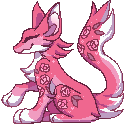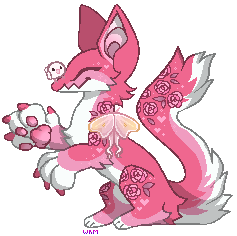Hey, I've been looking in to getting my own snake sometime near in the future and have been trying to do research in relation to housing and general animal husbandry.
I've encountered a general dilemma with trying to decide whether a tub or a vivarium would be better to house a snake in both for convenience sake and the well-being of the animal.
For context, I'm interested in owning a Ball Python as my first snake [regular/basic, not morphs - I don't personally agree with extorting genetics for profit but that's neither here nor there].
Does anyone have any experience with vivs/tubs and in particular Ball Pythons? I've heard that it can be hard to control humidity in Vivs which seem to be an issue for species like Ball Pythons who prefer higher humidity.
Any advice, opinions, etc are appreciated alongside any info/tips for an aspiring new owner!
Reptiles - Geckos, Lizards, Snakes, and Turtles!
-

Targaryen - Posts: 12453
- Joined: Mon Dec 21, 2015 1:45 pm
- My pets
- My items
- My wishlist
- My gallery
- My scenes
- My dressups
- Trade with me
Re: Reptiles - Geckos, Lizards, Snakes, and Turtles!
Imo a translucent tub with multiple hides (not an empty tub with only a water bowl, like some breeders do) is the best to start with. You can always upgrade later once you know your snake better.























-

Taiger Lilly - Posts: 2283
- Joined: Wed Oct 07, 2009 1:42 pm
- My pets
- My items
- My wishlist
- My gallery
- My scenes
- My dressups
- Trade with me
Re: Reptiles - Geckos, Lizards, Snakes, and Turtles!
- reposting my updated version of the faq uwu
Are they easy to care for?
Yes! They are not much work. They even do not stink, only their poop does. They don't make much noise either. A few chirps here and there when surprised, happy, or defensive. A scream only if they are defending themselves.
What do they eat?
Leopard geckos are insectivores, meaning they eat only insects. Gutloaded crickets, locusts, and dubia roaches are amazing staples! Mealworms can also be fed, but should not be the only feeder. They are high in fat and have a hard exoskeleton that is difficult to ingest. You should mix them into your diet with dubias or crickets. As an occasional treat, you can feed superworms, waxworms, butterworms, silkworms, and hornworms. Waxworms are very fatty and highly addictive, so they should not be fed often. A pinky mouse can be fed once a year only to an adult leo. Diet variation is very important!! At least have two different types of insects to feed, though more is always better. Never feed your leo insects you find in your home or outside. When feeding crickets, make sure to take out the remaining crickets after your gecko stops hunting. The crickets can bite a gecko and it can stress them out so far as they drop their tail.
How often do I feed them?
Baby geckos (under 6 months) should be fed daily, juveniles (6 months to a year) every other day, and adults (over a year) once every few days. Two insects per inch long your leo is should be fed every day, though for larger insects, such as dubia roaches, only a few a day need to be fed. Calcium and D3/vitamins are required to be put on their insects. Follow the instructions as said on the packaging. If they do not get calcium, leos will eventually get mbd (metabolic bone disease) and pass away. Vitamins allow them to absorb the calcium. D3 can be given on the insects or can be given through a UVB light.
What do they need in their cage?
A 10 or 20 gallon can be used for baby geckos, but juveniles and adults need a 20 gallon, longer than taller. Bigger tanks always work too but too much space can stress your gecko. For substrates, you can use paper towels, tile, reptile carpet, or eco earth. Paper towels should always be used for the first weeks with your leo. Tile can give your tank a clean, pleasing look, but it has to be textured. You can also use non-adhesive shelf liner. Their claws can get stuck and pulled out in reptile carpet and so can their teeth, but it is still usable. Just watch out for those two things. It is cheap and can be washed for reuse. Eco earth works for a natural look. It is dirt-like and digestible, and can be used for bioactive enclosures. Geckos under 6 months should not be housed on eco earth. Sand should never be used. If digested, your leo can become impacted, and impaction can lead to a slow and terrible death. If you are reading this and you house a leopard gecko on sand, please change it out and give your gecko a shallow, warm soak. You will need a heating pad with a connected thermostat. Heating lamps are not the best option since it doesn't heat the ground underneath hides and heats your leo from the back down when they need heat from the belly up. A heating lamp can become expensive with all the new bulbs you will have to buy, while heating mats can last for years with proper usage. You can use them, but it is not as recommended as heating mats are. Heating pads and lamps should only heat half of the tank, leaving the other half cool. You will need two thermometers with probes to check the temps of both sides of the enclosure. The warm side should be around 90 degrees and the cool side should be room temperature. A minimum of three hides are needed. One on the cool side, one on the warm side, and a humid hide on the warm side. The humid hide should have wet paper towels or wet moss in it at all times. It will provide your gecko with a second water source and make shedding easier. The moist hide should have a bottom and be a closed hide with only a small hole for an entrance. A shallow water dish is needed. If you feed worms, you will also need a food dish. Never house multiple leopard geckos in a tank. They can breed, fight, hog food, and bully one another. Even if they seem fine together, it may happen eventually. They are solitary and do not require a tank mate.
How do you clean their cage?
Geckos tend to do their 'business' in one corner of the cage. Once you can tell where it goes, you can put paper towels there and replace them up daily. Change its water daily and clean its water bowl out twice a week as it gets yucky fast. You will have to spray its moist hide one to three time a day depending on how fast it dries up. Cleaning differs for different substrates. If using paper towels, they should be replaced twice a week. Reptile carpet should be rinsed and disinfected once a week and washed in a washing machine once a month. Tile should be soaked in very hot water with dawn dish soap for 10 minutes, rinsed, dried, and disinfected once a week. Eco earth should have a half change once every few months and a complete change once every six months. The small amount of substrate in their 'poop corner' should be replaced once a month. Bioactive tank substrate rarely ever has to be cleaned as the cleanup crew does it for you. For all substrates, you should clean the glass with a vinegar and water or bought solution once or twice a month. Clean all their hides and accessories once a month. Keep leos in a medium container or critter keeper while doing anything other than daily cleanings.
What if my gecko is shedding?
If your gecko starts turns white, dont worry, its not dying!! It is about to shed. If it starts to shed its skin, just leave it alone for about a day and spray it moist hide more often than you normally do. If after a day or so there is some stuck shed on its feet or head, you can help it by placing them in a small container filled with warm (not hot!) water that reaches their belly. They cant swim so make sure not to have too much water. You can use a dropper or your finger and put some water on it's head or wherever else the stuck shed is. Let it soak for five minutes before taking it out. Soaking helps loosen stuck shed and allows it to lick it off easier. After soaking, try (your best) to use a paper towel and gently dry it with small dabs. If your gecko is still having problems getting stuck shed off, you can post here.
How do I hold it?
Its best to start getting your gecko warmed up to you at a young age. If your gecko is not used to being held, place your hand in the tank for 10-15 minutes a day. This is all you have to do. If you want to speed up the process, feed them with tweezers (you can buy ones for reptile insects) or your fingers if you are comfortable enough. Eventually your gecko will realize you are not a threat and climb onto your hand to investigate. Handle it over the enclosure for the first few times you handle it, in case it gets spooked and tries to jump or run off. It will also feel much more safe over its enclosure. Eventually you can transition to outside of the tank. Always have your other hand near it because it can jump off. Allow it to crawl up your arm and onto your shoulder. Once you feel comfortable with it, you can let it on your bed and other alike places. Just keep a close eye on it as it will dart off the bed. A fun thing you can do is watch a movie with it. Leos actually really like to watch movies and it will keep it interested! You can also set up a fun obstacle course for it in a cardboard box. You can keep it out for a maximum of 15 minutes, because it will eventually get cold. If its laying on you, you can keep it out for a bit longer, as it will take advantage of your body heat. Be careful not to pick your gecko up by its tail, as it will drop it and it will not grow back the same. Unless you scare it half to death, it will not bite you. If it does, it will not hurt and you will not bleed. The worst it can feel is like a little pinch.
Note: This is not the complete guide to owning a leopard gecko. Additional research should still be done.
Last edited by 72027 on Tue Feb 26, 2019 5:11 am, edited 3 times in total.
-

72027 - Posts: 8780
- Joined: Wed Jan 08, 2014 8:40 am
- My pets
- My items
- My wishlist
- My gallery
- My scenes
- My dressups
- Trade with me
Re: Reptiles - Geckos, Lizards, Snakes, and Turtles!
72027 wrote:reposting my updated version of the faq uwu
Are they easy to care for?
Yes! They are not much work. They even do not stink, only their poop does. They don't make much noise either. A few chirps here and there when surprised, happy, or defensive. A scream only if they are defending themselves.
What do they eat?
Leopard geckos are insectivores, meaning they eat only insects. Gutloaded crickets, locusts, and dubia roaches are amazing staples! Mealworms can also be fed, but should not be the only feeder. They are high in fat and have a hard exoskeleton that is difficult to ingest. You should mix them into your diet with dubias or crickets. As an occasional treat, you can feed superworms, waxworms, butterworms, silkworms, and hornworms. Waxworms are very fatty and highly addictive, so they should not be fed often. A pinky mouse can be fed once a year only to an adult leo. Diet variation is very important!! At least have two different types of insects to feed, though more is always better. Never feed your leo insects you find in your home or outside.
How often do I feed them?
Baby geckos (under 6 months) should be fed daily, juveniles (6 months to a year) every other day, and adults (over a year) once every few days. Two insects per inch long your leo is should be fed every day, though for larger insects, such as dubia roaches, only a few a day need to be fed. Calcium and D3/vitamins are required to be put on their insects. Follow the instructions as said on the packaging. If they do not get calcium, leos will eventually get mbd (metabolic bone disease) and pass away. Vitamins allow them to absorb the calcium. D3 can be given on the insects or can be given through a UVB light.
What do they need in their cage?
A 10 or 20 gallon can be used for baby geckos, but juveniles and adults need a 20 gallon, longer than taller. Bigger tanks always work too but too much space can stress your gecko. For substrates, you can use paper towels, tile, reptile carpet, or eco earth. Paper towels should always be used for the first weeks with your leo. Tile can give your tank a clean, pleasing look, but it has to be textured. Their claws can get stuck and pulled out in reptile carpet and so can their teeth, but it is still usable. Just watch out for those two things. It is cheap and can be washed for reuse. Eco earth works for a natural look. It is dirt-like and digestible, and can be used for bioactive enclosures. Geckos under 6 months should not be housed on eco earth. Sand should never be used. If digested, your leo can become impacted, and impaction can lead to a slow and terrible death. If you are reading this and you house a leopard gecko on sand, please change it out and give your gecko a shallow, warm soak. You will need a heating pad. Heating lamps are not the best option since it doesn't heat the ground underneath hides and heats your leo from the back down when they need heat from the belly up. A heating lamp can become expensive with all the new bulbs you will have to buy, while heating mats can last for years with proper usage. You can use them, but it is not as recommended as heating mats are. Heating pads and lamps should only heat half of the tank, leaving the other half cool. You will need two thermometers with probes to check the temps of both sides of the enclosure. The warm side should be around 90 degrees and the cool side should be room temperature. A minimum of three hides are needed. One on the cool side, one on the warm side, and a humid hide on the warm side. The humid hide should have wet paper towels or wet moss in it at all times. It will provide your gecko with a second water source and make shedding easier. The moist hide should have a bottom and be a closed hide with only a small hole for an entrance. A shallow water dish is needed. If you feed worms, you will also need a food dish. Never house multiple leopard geckos in a tank. They can breed, fight, hog food, and bully one another. Even if they seem fine together, it may happen eventually. They are solitary and do not require a tank mate.
How do you clean their cage?
Geckos tend to do their 'business' in one corner of the cage. Once you can tell where it goes, you can put paper towels there and replace them up daily. Change its water daily and clean its water bowl out twice a week as it gets yucky fast. You will have to spray its moist hide one to three time a day depending on how fast it dries up. Cleaning differs for different substrates. If using paper towels, they should be replaced twice a week. Reptile carpet should be rinsed and disinfected once a week and washed in a washing machine once a month. Tile should be soaked in very hot water with dawn dish soap for 10 minutes, rinsed, dried, and disinfected once a week. Eco earth should have a half change once every few months and a complete change once every six months. The small amount of substrate in their 'poop corner' should be replaced once a month. Bioactive tank substrate rarely ever has to be cleaned as the cleanup crew does it for you. For all substrates, you should clean the glass with a vinegar and water or bought solution once or twice a month. Clean all their hides and accessories once a month. Keep leos in a medium container or critter keeper while doing anything other than daily cleanings.
What if my gecko is shedding?
If your gecko starts turns white, dont worry, its not dying!! It is about to shed. If it starts to shed its skin, just leave it alone for about a day and spray it moist hide more often than you normally do. If after a day or so there is some stuck shed on its feet or head, you can help it by placing them in a small container filled with warm (not hot!) water that reaches their belly. They cant swim so make sure not to have too much water. You can use a dropper or your finger and put some water on it's head or wherever else the stuck shed is. Let it soak for five minutes before taking it out. Soaking helps loosen stuck shed and allows it to lick it off easier. After soaking, try (your best) to use a paper towel and gently dry it with small dabs. If your gecko is still having problems getting stuck shed off, you can post here. ;)
How do I hold it?
Its best to start getting your gecko warmed up to you at a young age. If your gecko is not used to being held, place your hand in the tank for 10-15 minutes a day. This is all you have to do. If you want to speed up the process, feed them with tweezers (you can buy ones for reptile insects) or your fingers if you are comfortable enough. Eventually your gecko will realize you are not a threat and climb onto your hand to investigate. Handle it over the enclosure for the first few times you handle it, in case it gets spooked and tries to jump or run off. It will also feel much more safe over its enclosure. Eventually you can transition to outside of the tank. Always have your other hand near it because it can jump off. Allow it to crawl up your arm and onto your shoulder. Once you feel comfortable with it, you can let it on your bed and other alike places. Just keep a close eye on it as it will dart off the bed. A fun thing you can do is watch a movie with it. Leos actually really like to watch movies and it will keep it interested! You can also set up a fun obstacle course for it in a cardboard box. You can keep it out for a maximum of 15 minutes, because it will eventually get cold. If its laying on you, you can keep it out for a bit longer, as it will take advantage of your body heat. Be careful not to pick your gecko up by its tail, as it will drop it and it will not grow back the same. Unless you scare it half to death, it will not bite you. If it does, it will not hurt and you will not bleed. The worst it can feel is like a little pinch.
Note: This is not the complete guide to owning a leopard gecko. Additional research should still be done.
Good information ^-^! A few more things that might be helpful. I would remove the eco earth as a substrate and maybe add non-adhesive shelf liner. In addition to being an impaction hazard, it can cause the humidity in the tank to be too high which can give them a respiratory infection. Also to never leave crickets in the tank with your gecko unsupervised. They can irritate and bite your gecko so always remove the uneaten ones. Lastly, a thermostat connected to the under-tank heater so it doesn't get too hot :D
Oh and bites might not hurt but they can(usually wont) bleed. If one does bite you, do not try and pull them off because this will tear the skin and probably cause harm to your gecko. Stay calm and let them let go. This is best for you and your gecko. Even if it didn't break the skin you should still wash the area. :)

-

CSF - Posts: 11961
- Joined: Thu Sep 24, 2009 1:03 pm
- My pets
- My items
- My wishlist
- My gallery
- My scenes
- My dressups
- Trade with me
Re: Reptiles - Geckos, Lizards, Snakes, and Turtles!
- ive updated it with that, but ive never heard of eco earth causing humidity to be too high? i mean, you should not be misting the whole tank like you would with some other reptiles, so i dont see how humidity would get high?? but hey, ill do some research on it.
edit; ive found that while eco earth may increase humidity a bit, theres hasnt been any recorded occurrences where using eco earth has caused a respiratory infection. eco earth does not raise the humidity anywhere near the concerning point. if you are worried, you can get a hygrometer. also having a mesh lid should let any built up humidity escape. eco earth should always be bone dry, you should never wet it. i also found out something interesting. it was found that newts were living with leopard geckos. that means, their shared environment is not always bone dry. but of course, that humidity would be bad continuously. [looked at multiple website and leopard gecko on youtube]
'


╔══ •❀°•°❀°•°❀• ══╗
║
║
║
║
║
║
║
emmy | she/her
hi! i am a furry artist,
taxidermist, and zoology'''''''''
student. (´・ω・ `)
║
║
║
╚═════════════╝
'''''''''''''''''''''''''''''''my socials
-

72027 - Posts: 8780
- Joined: Wed Jan 08, 2014 8:40 am
- My pets
- My items
- My wishlist
- My gallery
- My scenes
- My dressups
- Trade with me
Re: Reptiles - Geckos, Lizards, Snakes, and Turtles!
Targaryen wrote:Hey, I've been looking in to getting my own snake sometime near in the future and have been trying to do research in relation to housing and general animal husbandry.
I've encountered a general dilemma with trying to decide whether a tub or a vivarium would be better to house a snake in both for convenience sake and the well-being of the animal.
For context, I'm interested in owning a Ball Python as my first snake [regular/basic, not morphs - I don't personally agree with extorting genetics for profit but that's neither here nor there].
Does anyone have any experience with vivs/tubs and in particular Ball Pythons? I've heard that it can be hard to control humidity in Vivs which seem to be an issue for species like Ball Pythons who prefer higher humidity.
Any advice, opinions, etc are appreciated alongside any info/tips for an aspiring new owner!
I recently moved my BP to a tub with 2 hides, a water bowl, and eco earth as substrate. Before that, he was kept in a 30 gallon long tank. I think his tub is 52-60 quarts? I'm not too sure. I was told that a smaller male like mine could be kept in a 32 quart tub, and that 52 quarts were what large breeding females are kept in, but.. I understand if you're a breeder you want to save space, but for me I'll go for the most space I can supply for my noodle. Personally anything smaller than 52 quarts and I wouldn't have been able to live with myself, but that's just me. I don't doubt that ball pythons like extra space sometimes (it usually depends on the snake's personality) but there is definitely a certain amount of anthropomorphic assumptions that some keepers believe. I think my guy likes to explore, so I give him some tub space, but would a snake necessarily be unhappy with smaller as long as proper husbandry and essentials were provided? That's up to the individual, I suppose.
Annyyywayyy... Humidity is much harder to keep within range in a tank than in a tub or custom reptile enclosure, however it is possible if you are willing to put in the work. Ball pythons need humidity to be 50-60% consistently, and 70-80% while shedding. There a number of things you can do to try and make the humidity work in a tank, like covering the top screen with foil/plexiglass/a damp towel, using a bigger water bowl, placing the water bowl directly under/over the heat source, using a heat source that isn't an overhead one (heat lights and CHEs etc dry out the air), getting a substrate that holds humidity well (eco earth, cypress mulch, forest floor etc), misting/spraying the tank multiple times every day (which, depending on your water, will likely put water marks on the glass as it dries), or using a mister/fogger on a timer (misters/foggers are made for higher humidity animals like poison dart frogs, so to avoid too much humidity and issues like scale rot it must be put on a timer).
So yeah, it's possible to maintain humidity in a tank, though it takes a lot of work and time. In my tank I had the screen top covered with foil, eco earth substrate which I would dampen every few days, and I was misting several times a day, but it kept on falling below 50% and sometimes even below 40%. For ease of care I switched to a tub, but if you have the time and dedication to maintain humidity in a tank, and being able to see the animal clearly through the glass matters to you, I say go ahead. Though ball pythons also don't make very good display animals as they're hiding all day. My BP actually comes out of his hides a lot more than when he was in his tank since the dark tub makes him feel more secure. Yes, it's harder to see him through the frosty tub than through clear glass, but now I only have to dampen his eco earth like once a week to maintain humidity, and that's because I poked too many holes in his tub. Some people just use paper towel as a substrate so I reckon if you get the holes right the humidity almost won't need to be maintained. Again, it's up to you, but personally I'll stick with tubs for any ball pythons I get.
I'm glad you're researching and asking questions before getting a ball python! That's something that me and a lot of other keepers didn't do before jumping to owning one, and we all had to change our setups and care many many times at first because of that! Good luck, I hope you'll get your own little noodle eventually!

-

Violently Violet - Posts: 4071
- Joined: Sat Jul 29, 2017 6:21 am
- My pets
- My items
- My wishlist
- My gallery
- My scenes
- My dressups
- Trade with me
Re: Reptiles - Geckos, Lizards, Snakes, and Turtles!

Hey guys I finally finished my bioactive setups for geckos ! 2 Leo’s and 1 aft gecko c:
I’m happy how they came out!

herpetology | aquascaping | entomology
xxxxthey/them | artist | ecologist
▬▬▬▬▬▬▬▬▬▬▬▬▬▬▬▬▬▬▬▬▬▬▬▬▬▬▬▬▬▬▬▬▬▬▬▬▬▬▬▬▬▬▬▬▬▬▬▬▬▬▬▬▬
❝ ❝
xxHeyo I'm Ven. I like reptiles and fish. Currently in college pursuing
a major in Ecology and Environmental Science degree, with a focus on ichthyology.

Don't you ever feel like you've been destined for something bigger than your skin?
XXXXXXXXXXXXXXXXXXXXXXXXXXXXXXXXXXXXXXXXXXXX❞ ❞xxHeyo I'm Ven. I like reptiles and fish. Currently in college pursuing
a major in Ecology and Environmental Science degree, with a focus on ichthyology.


╭xxxxxxxx╮
img by
crowprince
╰xxxxxxxx╯crowprince
-

vencrypt - Posts: 5935
- Joined: Thu Jun 19, 2014 2:36 pm
- My pets
- My items
- My wishlist
- My gallery
- My scenes
- My dressups
- Trade with me
Re: Reptiles - Geckos, Lizards, Snakes, and Turtles!
Hi! I have a crested gecko li'l lady. She doesn't seem to like me and jumps away from me at every opportunity. Do any of you guys have any good tips on how to bond with her? I want to have a closer relationship, but it is so hard when she doesn't like me!!

-

Pathetic_aesthetic_ - Posts: 4730
- Joined: Thu Oct 27, 2016 3:25 pm
- My pets
- My items
- My wishlist
- My gallery
- My scenes
- My dressups
- Trade with me
Re: Reptiles - Geckos, Lizards, Snakes, and Turtles!
Pathetic_aesthetic_ wrote:Hi! I have a crested gecko li'l lady. She doesn't seem to like me and jumps away from me at every opportunity. Do any of you guys have any good tips on how to bond with her? I want to have a closer relationship, but it is so hard when she doesn't like me!!
You should start by just laying your hand in her enclosure and letting her investigate it on her own. You can also try taking some of her food and putting it on the palm of your hand, or dipping your finger in it and letting her lick it off (if it's the stuff you mix with water). Once she figures out that you're not a threat, she should calm down some. Keep in mind that crested geckos are still fairly jumpy and, even after they've gotten more comfortable with you, may decide they just want to jump off your hand.
♡
║
♥
║
♡
║
♥
║
♡
║
♥
║
♡
║
♥
║
♡
║
♥
║
♡
║
♥
║
♡
║
♥
║
♡
║
♥
║
♡
║
♥
║
♡
║
♥
║
♡
-

Sixx O'Clock - Posts: 27763
- Joined: Sun Jan 05, 2014 5:11 pm
- My pets
- My items
- My wishlist
- My gallery
- My scenes
- My dressups
- Trade with me
Re: Reptiles - Geckos, Lizards, Snakes, and Turtles!
Hello! I have a four year old female crested gecko that has been giving me a lot of trouble lately, and I am extremely worried. Vidar recently laid an egg that wasn’t fertile, and out of concern I took her into the vet as her health declined more afterwards. I was worried about there being a second egg? The vet told me that this is normal, and she then gave Vidar a calcium shot, and vitamins for me to give her everyday for six weeks. It’s been six weeks and nothing has happened, and her health has only gotten worse.
It’s costed me $160 for the exam, vitamins, and shot.
I went in two seperate times, and the last time they said I couldn’t do anything more than a $300 xray and then a surgery. There is no way I can afford either of those options.
I am a highschool student about to go to college and I am already struggling with money. My lovely girlfriend helped me pay for some of the vitamins and shots.
I gave the vitamins to her for the recommended period but since I stopped she’s gotten worse. Should I continue to give them to her?
She just acts like she’s given up.
I have no idea what else to do for her. I’ve given her numerous soaks, and I’ve had to force feed her because she’s not eating or drinking anything.
This has been going on for six weeks. I really can’t afford to take her to the vet again when all they tell me is there's nothing I can do, and that this is all normal, because it can’t be, right? There are no exotic vets around here but two, and both have given me the same answer.
There’s nothing on the internet about my situation that I’ve been able to find.
They were also fearful that it could be tumor instead of an egg.
Is there anything I can do? Has someone else experienced this?
She’s so weak she can’t walk or hold herself up very well, and it makes me sick.
She is my baby, and it’s really hard to see her like this. I’ve grown exhausted trying to find answers.
It’s costed me $160 for the exam, vitamins, and shot.
I went in two seperate times, and the last time they said I couldn’t do anything more than a $300 xray and then a surgery. There is no way I can afford either of those options.
I am a highschool student about to go to college and I am already struggling with money. My lovely girlfriend helped me pay for some of the vitamins and shots.
I gave the vitamins to her for the recommended period but since I stopped she’s gotten worse. Should I continue to give them to her?
She just acts like she’s given up.
I have no idea what else to do for her. I’ve given her numerous soaks, and I’ve had to force feed her because she’s not eating or drinking anything.
This has been going on for six weeks. I really can’t afford to take her to the vet again when all they tell me is there's nothing I can do, and that this is all normal, because it can’t be, right? There are no exotic vets around here but two, and both have given me the same answer.
There’s nothing on the internet about my situation that I’ve been able to find.
They were also fearful that it could be tumor instead of an egg.
Is there anything I can do? Has someone else experienced this?
She’s so weak she can’t walk or hold herself up very well, and it makes me sick.
She is my baby, and it’s really hard to see her like this. I’ve grown exhausted trying to find answers.
-

Siddy - Posts: 3266
- Joined: Tue Oct 29, 2013 8:49 am
- My pets
- My items
- My wishlist
- My gallery
- My scenes
- My dressups
- Trade with me
Who is online
Users browsing this forum: No registered users and 0 guests








